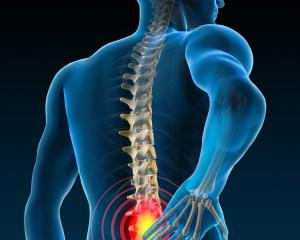Research is the right way to evaluate innovative practice: the Health and Disability Commissioner is sending the wrong message, writes Charlotte Paul, Emeritus Professor of Preventive and Social Medicine at the University of Otago.
Back in 2010 two patient advocates complained to the Health and Disability Commissioner (HDC), Anthony Hill.
They were worried about the apparently experimental use of a drug ketamine and whether proper consent was obtained.
At the end of 2011 the HDC decided to investigate, spurred on by a report from the National Health Board. Three years after the initial complaint the HDC has reported his findings. The matter concerns a small number of severely depressed patients treated by an experienced psychiatrist at Dunedin Hospital who understandably found the lengthy investigation "stressful and distracting".
Now the report has come out, it is time to consider whether the right lessons have been learnt.
The HDC has decided, on the balance of probabilities, that Dr A was not carrying out research or experimental treatment. But in the future Anthony Hill wants Dr A and his colleagues to "adopt a more disciplined approach to the recordings of consultations with peers when approaching the question of whether a treatment is experimental and whether it also constitutes research".
The subtext of his report is that clinical practice is fine but research is not.
There has been a collective sigh of relief from the Southern DHB that the HDC has cleared Dr A of conducting research. But what is wrong with research? When an innovative practice is being introduced it is safer for patients to introduce it as a research project. As University of Chicago paediatrics professor John Lantos has written:
If clinicians try a new therapy with the idea of studying it carefully, evaluating outcomes, and publishing the results, they are doing research. .... If the study is permitted, every adverse event will be carefully documented and scrutinized.
If, however, clinicians try the same new therapy without any intention of studying it, simply because they believe it will benefit patients, it is not research... and adverse events may not necessarily be noticed or analysed.
Both effectiveness and safety will be carefully recorded and analysed with a research project, and this information helps both present and future patients. Clinical care will not necessarily include the same safeguards.
Anthony Hill had expert advice from two psychiatrists: Associate Professor Wayne Miles and Dr Allen Fraser. Dr Miles called the use of ketamine in this situation ‘innovative treatment' while Dr Fraser called it clinical care. Nevertheless, Dr Fraser commended Dr A for monitoring the effects of treatment.
He went further and said: "Failure to have done so would attract strenuous criticism, as he would have no objective data to evaluate treatment." Clearly neither expert saw Dr A's use of ketamine for treatment resistant depression as ordinary clinical care.
Ketamine, long used at higher doses as an anaesthetic agent, has only recently been used for depression.
As Dr Miles stated: "The benefits of IV ketamine for treatment resistant depression is suggestive of rapid but not sustained improvement in mood... I believe it is sufficient to suggest further trialling of the product but would not be sufficient to support regular use." A review in 2012, which Dr Fraser cites, concluded that it "remains a highly experimental treatment approach for Major Depressive Disorder and adoption in psychiatric practice settings at this time is premature".
In this situation, the course that best protects the interests of patients, and provides evidence for future use, is to design a research study, a clinical trial. This entails developing a protocol, information for patients, consent forms, proper monitoring, and independent review of the science and ethics.
In fact Dr A did develop a protocol, information for patients, and monitoring arrangements. He also had informal advice from peers. Moreover, he published the results for two of the patients as a research letter in the journal Biological Psychiatry: "treated with open-label ascending doses of IM ketamine as part of clinical care." He also submitted an abstract and presented his results at a conference for 10 patients, reporting on both effectiveness and side effects.
Despite this, in the course of the HDC investigation, Dr A maintained he was not conducting research because he did not have all the usual constituents of research in place. He described his activities as clinical care and the monitoring as ‘clinical audit'.
In this case, as the HDC found, it is difficult to make a judgement about whether it was clinical care or interventional research. It would not usually be regarded as audit because audit entails evaluating existing practice and is observational in nature. Clearly giving ketamine was an intervention, and the effect of giving it was studied. In my opinion, Dr Miles was correct in his assessment that what Dr A did best fell under the label of innovative practice.
Innovative practice has been defined as a significant and intentional deviation from established practice that is not strictly the object of research.
In New Zealand, the Operational Standard for Ethics Committees 2006 advised that ethics review was required for such practices and gave detailed guidance for the conduct of such review. Calling it innovative practice would have alerted people to the general guidance that such practices should be made the objects of research, where possible. It would also have alerted clinicians to the requirement for ethical review.
The National Ethics Advisory Committee (NEAC) was set up in 2002 to address issues related to both research and innovative practice. No doubt this was influenced by Judge Cartwright's observation that to defend a practice on the basis that it was a ‘new treatment protocol' rather than a ‘research project' had no merit: both required similarly high ethical standards.
Unfortunately, since the hasty review and reconfiguration of ethics committees in 2012, all advice on innovative practice has been removed from the Ministry of Health guidelines. Nor has the discussion paper on innovative practice produced by NEAC in 2006, in which a number of options for the future were canvassed, been acted on.
The lesson to be learned here is that Dr A's novel use of ketamine was ethically and professionally acceptable only to the extent that he conducted it in a research-like manner, the opposite of the lesson promulgated by the HDC.
An innovative practice should be introduced with, at the least, many of the attributes of a research project. Indeed a formal research project would have provided more protections for scientific conduct and patient safety - through independent scientific and ethical review. If that had happened, it is unlikely there would have been a complaint in the first place.
In this case it appears no patients were harmed and some were helped. But for the future, more careful thought is needed about innovative practice, not more paperwork.












